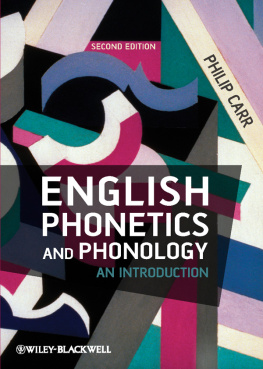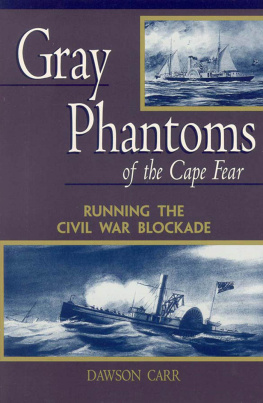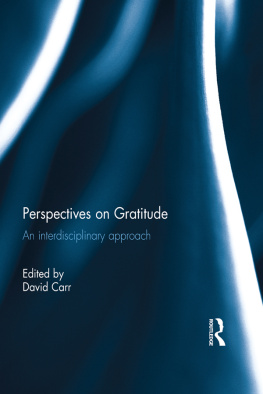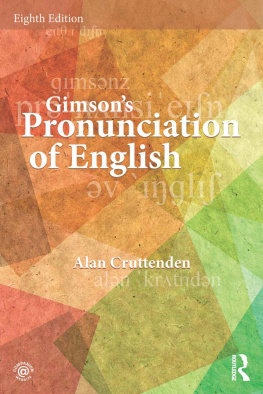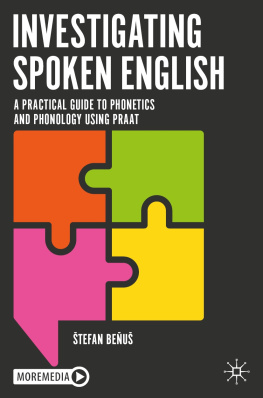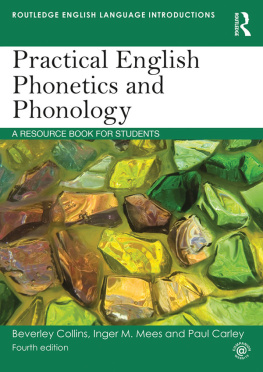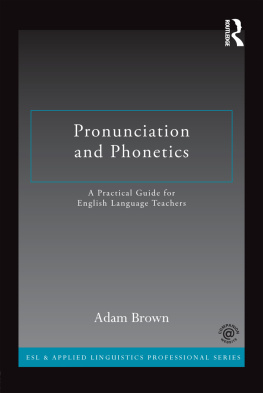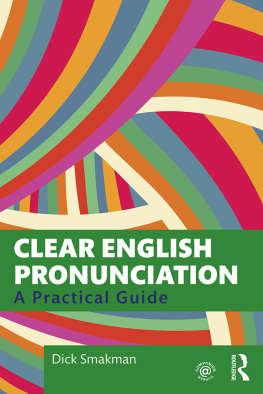

This second edition first published 2013
2013 Philip Carr
Edition History: Blackwell Publishing Ltd (1e, 1999)
Blackwell Publishing was acquired by John Wiley & Sons in February 2007. Blackwells publishing program has been merged with Wileys global Scientific, Technical, and Medical business to form Wiley-Blackwell.
Registered Office
John Wiley & Sons Ltd, The Atrium, Southern Gate, Chichester, West Sussex, PO19 8SQ, UK
Editorial Offices
350 Main Street, Malden, MA 02148-5020, USA
9600 Garsington Road, Oxford, OX4 2DQ, UK
The Atrium, Southern Gate, Chichester, West Sussex, PO19 8SQ, UK
For details of our global editorial offices, for customer services, and for information about how to apply for permission to reuse the copyright material in this book please see our website at www.wiley.com/wiley-blackwell.
The right of Philip Carr to be identified as the author of this work has been asserted in accordance with the UK Copyright, Designs and Patents Act 1988.
All rights reserved. No part of this publication may be reproduced, stored in a retrieval system, or transmitted, in any form or by any means, electronic, mechanical, photocopying, recording or otherwise, except as permitted by the UK Copyright, Designs and Patents Act 1988, without the prior permission of the publisher.
Wiley also publishes its books in a variety of electronic formats. Some content that appears in print may not be available in electronic books.
Designations used by companies to distinguish their products are often claimed as trademarks. All brand names and product names used in this book are trade names, service marks, trademarks or registered trademarks of their respective owners. The publisher is not associated with any product or vendor mentioned in this book. This publication is designed to provide accurate and authoritative information in regard to the subject matter covered. It is sold on the understanding that the publisher is not engaged in rendering professional services. If professional advice or other expert assistance is required, the services of a competent professional should be sought.
Library of Congress Cataloging-in-Publication Data
Carr, Philip, 1953
English phonetics and phonology : an introduction / Philip Carr. Second edition.
pages cm
Includes bibliographical references and index.
ISBN 978-1-4051-3454-5
1. English languagePhonology. 2. English languagePhonetics.
PE1133.C34 2013
421.5dc23
2012005351
A catalogue record for this book is available from the British Library.
Cover image: Patrick Henry Bruce, Peinture/Nature Morte , c. 19256. Corcoran Gallery of Art, Washington, D.C. Photo SuperStock.
Cover design by Simon Levy.
1 2013
Sound Recordings
These sound files accompany exercises, the treatment of intonation, and the description of some of the varieties of English given here. They are marked in the margins with a headphones symbol (as shown), and are available at: www.wiley.com/go/carrphonetics

Prefaces to the First Edition
Preface for Teachers
Each year in the Department of English at Newcastle University, I am given eleven 50-minute lecture slots in which to introduce English phonetics and phonology to around a hundred students in the first semester of their first year on a variety of different undergraduate degree programmes, including English language and literature, linguistics, English language, modern languages, music, history and many others. Also included in the student body are European exchange undergraduates and students taking applied linguistics postgraduate degrees in media technology and in linguistics for teachers of English as a second language.
Given the range of degree types, this is a daunting task, made even more difficult by the fact that a substantial minority of the students do not have English as their first language. In a typical year, the student cohort will include speakers of Arabic, French, Spanish, German, Greek, Japanese, Korean, Mandarin or Cantonese Chinese, and Thai. Many of the non-native speakers will have been taught RP; others will have been taught General American. Amongst the native speakers of English, very few of the students will be speakers of RP, so that the non-native speakers are more likely to speak RP than the native speakers.
The vast majority of the student body will take their study of English phonetics and phonology no further, and the one factor which the majority of this diverse band of students shares is that they have no previous knowledge of phonetics or phonology; the course must therefore be ab initio .
One faces a dilemma in teaching such a course: on the one hand, one wants to cater to the small minority who will go on to study phonology at a more advanced level. On the other hand, one wants to introduce the subject without overwhelming the students with a mass of bewildering descriptive detail and an avalanche of seemingly arcane theoretical constructs. It is a moot point whether this dilemma can be resolved. However, this textbook was written as an attempt at a solution.
It is arguable that textbooks are harder to write than monographs, and that the more elementary the textbook, the harder it is to write: one can barely write a line without being aware of ones often questionable assumptions, and one has always to resist the temptation to question them in the body of the text. One continually has the sense of ones peers looking over ones shoulder and guffawing at the absurd oversimplifications which one is knowingly committing to print. But it has to be done: students have to learn to walk before they can learn to run; they also have to learn to crawl before they can learn to walk.
Writing and using textbooks is an empirical matter: it is very often immediately apparent when an exercise, chapter or book is simply not working, for a given body of students. Almost all of the textbooks which I have used on the first-year Newcastle course described here have proved to be unsuitable for this type of student cohort in one way or another; mostly, they have contained far too much detail. I have therefore set out to write a very short, very simple coursebook which deliberately ignores a great many descriptive/theoretical complexities.
My aim has not been to introduce students to phonological theory; rather, I have sought to introduce some of the bare essentials of English phonetics and phonology in a manner that is as theory-neutral as possible. This is fundamentally problematic, of course, since there is no such thing as theory-neutral description. I have therefore decided to adopt various theoretical/descriptive views, such as the tongue-arch/cardinal vowel approach to articulatory description, the phonemic approach to segmental phonology, the trochaic approach to English foot structure, and so on, on the purely pragmatic basis of what I have found to be easiest to convey to the students.
I have ignored acoustic phonetics for the very simple reason that our department lacks a phonetics lab, and I have not included distinctive features, since the mere sight of arrays of features marked with + and symbols seems to render large numbers of my first-year students dizzy (particularly those majoring in English literature). I have also excluded feature geometry, the mora, under-specification and a great many other theoretical/descriptive notions, in an attempt to pare the subject down to a bare minimum of these.
Next page
